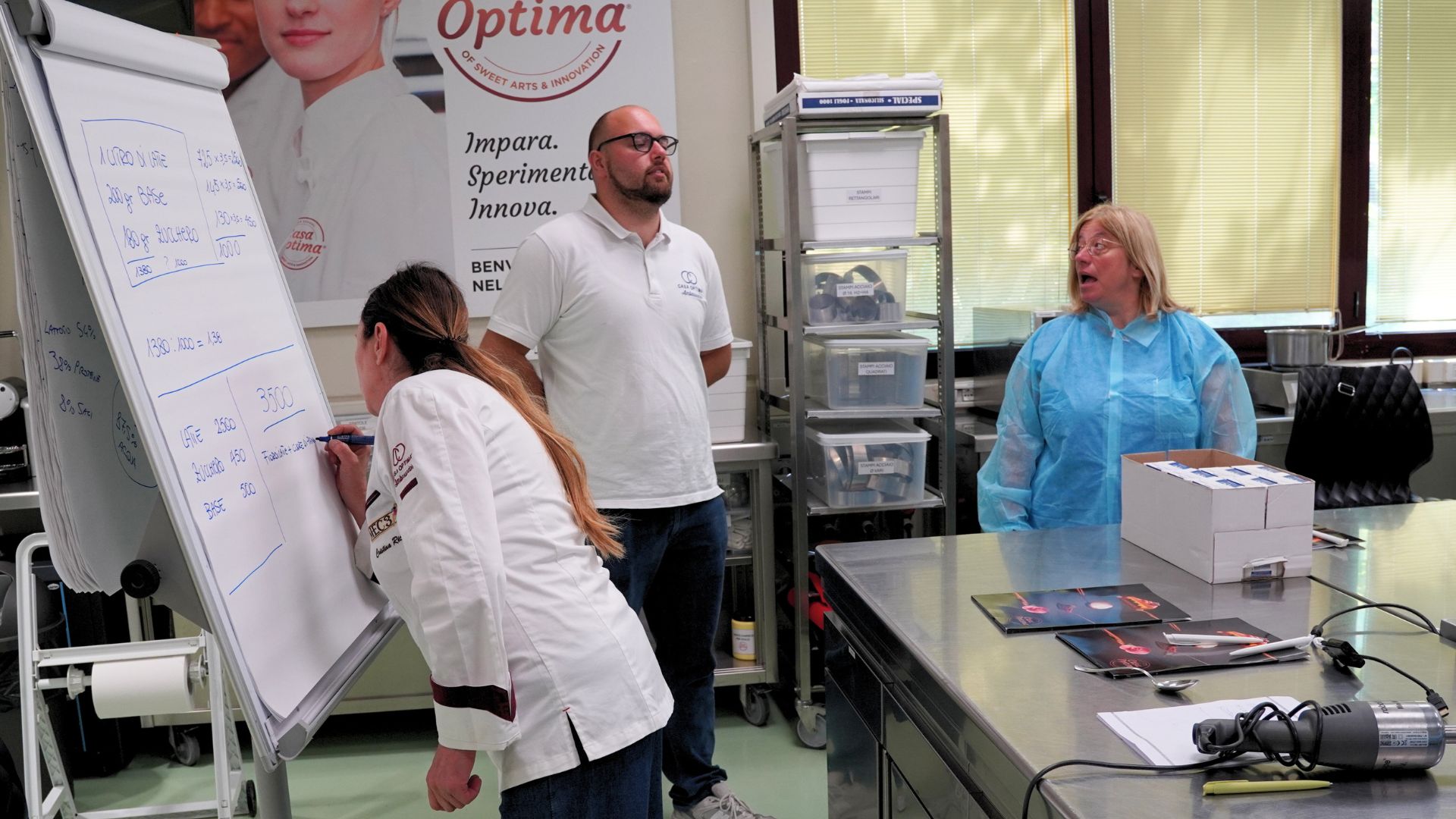The collaboration between the Casa Optima School and the Nuovo Villaggio del Fanciullo Foundation of Ravenna continues
and as always, offers everyone great emotions. Because the preparation of a good artisanal gelato not only includes ingredients, but a
path made up of technique, passion, and creativity.
Guided by Ambassadors Cristina Ricci and Alessandro Lacono, on Friday the 20th of June, eight guests of the Foundation,
accompanied by the operator Lorenza Tosato, went to the School in San Clemente, and over the course of a day they tried their hand
at making four classic flavours such as fiordilatte, hazelnut, pistachio and gianduja, four flavours that tell the story of Italian artisanal
gelato.
Each of them interpreted these flavours in their own way, turning them into gelato on sticks with an original character, experimenting
with the coatings and decorations. The same happened in the next step, when they created their own gelato cake using the
variegates, where they searched for the perfect combination of flavours to create a dessert that was not only good to taste, but also
beautiful to look at.
“The day was greeted with enthusiasm and joy; they never ceased to thank us – said Cristina Ricci – It was an opportunity for the
youngsters to enter, even if only for a day, into the heart of our reality, to see and to touch with their own hands what we are capable
of transmitting in the Casa Optima School. It was an extraordinary, engaging and stimulating experience, which I hope will light a spark
and open up new paths for them. Seeing them beaming with happiness, with curiosity in their eyes and the enthusiasm with which they
set to work, was confirmation of how much our work can go beyond just didactics, truly becoming a bridge towards new opportunities.”
The purpose of the Nuovo Villaggio del Fanciullo Foundation is to help disadvantaged people in need of care and temporary
accommodation with the exclusive pursuit of non-profit social solidarity purposes, in the sectors of social and health care assistance,
training, charity and scientific research typical of “recovery communities.”
